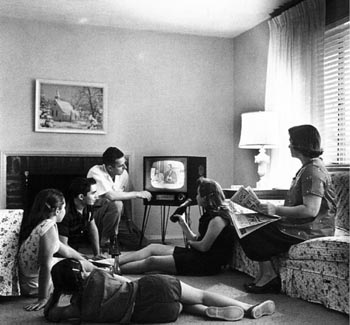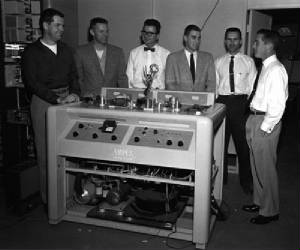|
Unlike the 1940s where
developing the technology to create TV was the focus, the 1950s were about improving upon that technology and standardizing
the industry. On the subject of standardization, in 1950, the second National Television System Committee (NTSC) was
created. The purpose of this committee was to develop technology and practices that helped establish a common system
to better serve the customer base. This included produced televsion sets that could show both color and monochromatic
images equally well and that could switch between various networks without difficulty.
The need for such a committee
stemmed from the fact that television was becoming more of a national institution. Movie theaters saw lower attendence
rates as televsion entered the home. The introduction of color was especially influencal in the move from theater to
home theater. The very notion of the television becoming a personal theater put a demand on the industry to create more
'movie-like' programming. Television production facilities began to move west to Hollywood as recorded television programs
took over the airwaves and live programs dwindled.

With a set policy
in place, the mid-late fifties were all about marketing the product to the public. Video recording devices were introduced
and the general public became better able to own a television set. Recording technology experienced a boom as both professionals
and amateurs poured over the possibilities that these devices would allow. The Ampex project created some of the first
major recording devices (pictured below) for market. These were called Videotape Recorders (VTR) as opposed to
the later Videocassette Recorders (VCR) that dominated the consumer market. This is significant because shows could
finally be filmed on a backlot and then presented to the audience upon completion.

By the late fifties,
television technology was an ever-evolving field which reached across borders. Many minds in other parts of the world
were crafting different ways of accomplishing the same goal. For example, the European countries decided to not follow
the policy of NTSC and instead elected to create their own system using their own technology as well as some of the technology
developed here in the United States.
|

